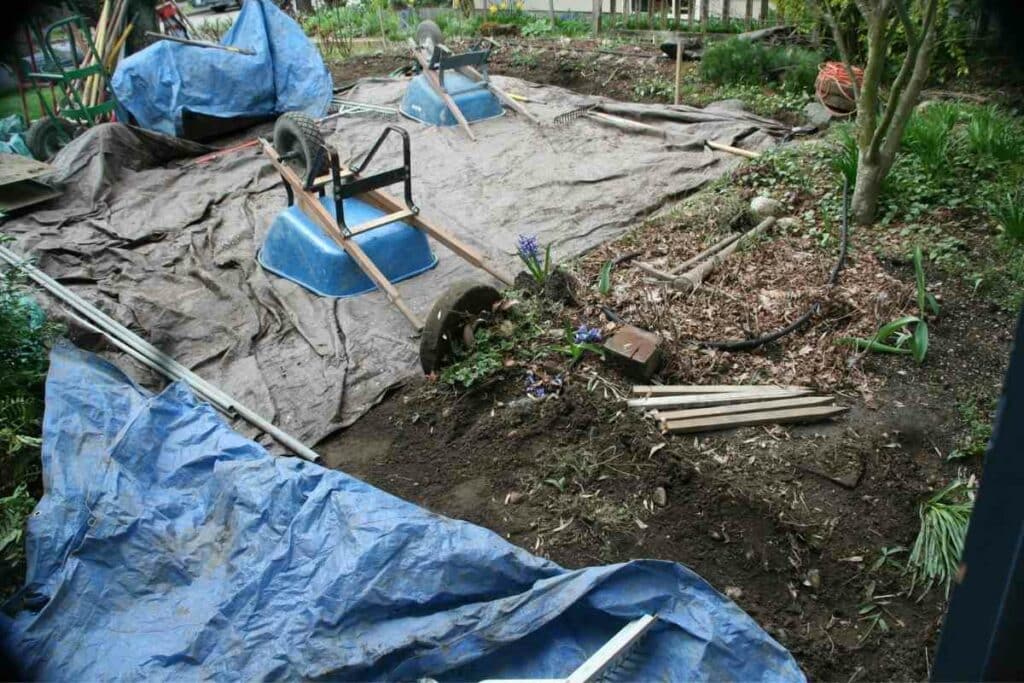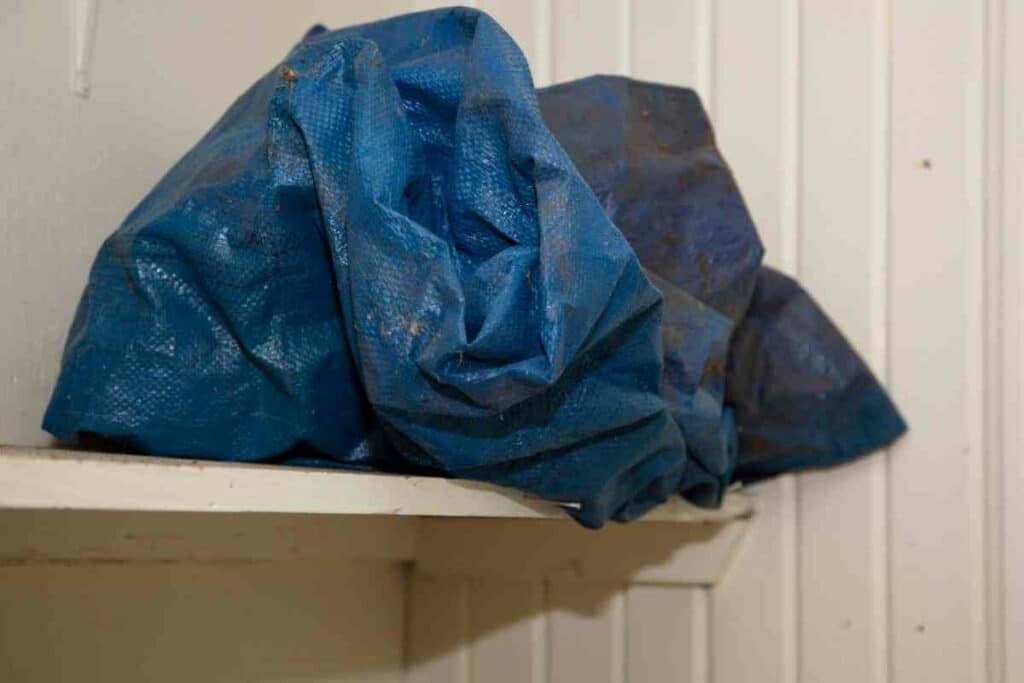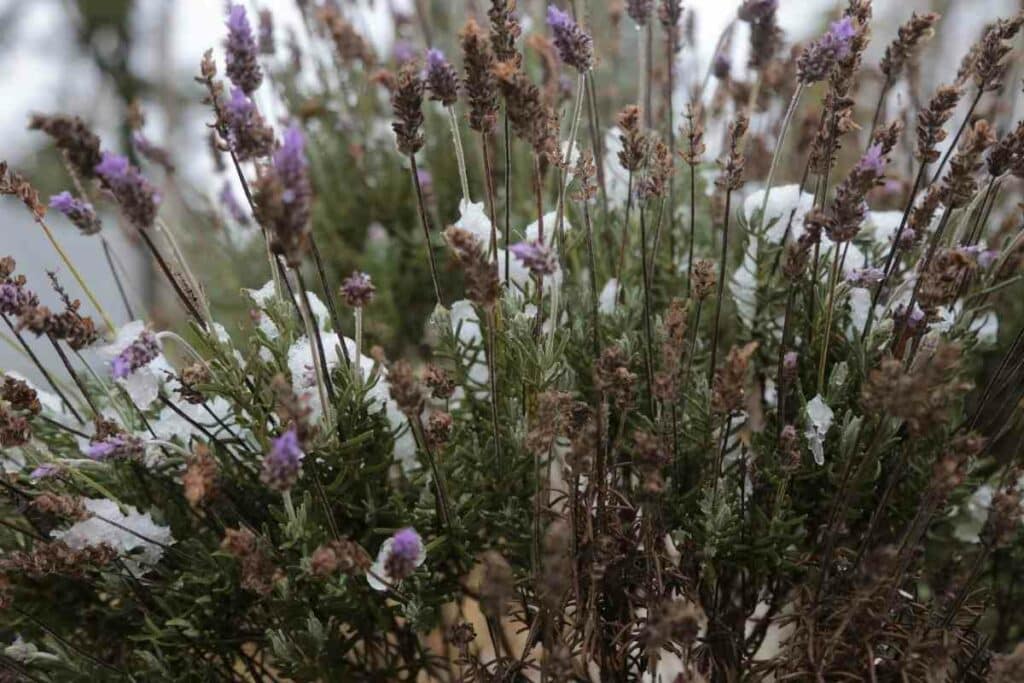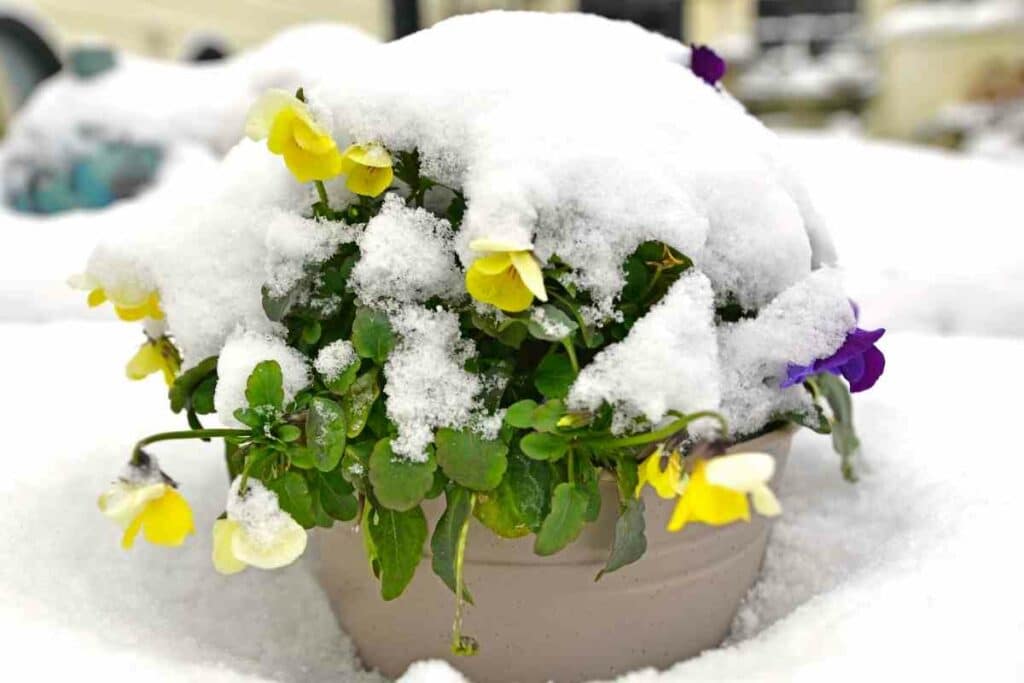During winter, frost is common, especially during nights when temperatures reach the freezing point.
If left unattended, the moisture in plants could freeze out, causing damage to plants. One of the ways to prevent this from happening is by covering the plants.

There are many materials that one can use to cover plants to protect them from frost. The tarp is a type of plastic that can be used, but it is not heavily recommended.
A tarp is not as breathable and light as covers made of natural materials like cotton, linen, blanket, and newspaper.
Will A Tarp Protect Plants from Frost?
When used correctly, a tarp can protect plants from frost during the night.
However, by virtue of it being plastic, it is not the best for the purpose. Plastics do not have spaces for breathing, so they trap moisture inside them, which can be counterproductive.
The point of a cover is to trap warmth so that the plants do not freeze over.
Essentially – A cover should allow moisture from the plants to escape and simultaneously protect the plants from frost. Also, it should capture the heat that is being radiated from the ground and preserve it for the plants.
Tarp, vinyl, and other types of plastic covers are not breathable. They trap and retain the moisture generated by the plants.

If the temperature is low enough, the moisture trapped inside freezes over, putting the plants in a lot more danger than if they had frozen over by themselves.
Therefore, if you absolutely must use a tarp to cover your plants during a frost, you have got to be tactical about it.
How To Correctly Use Tarp to Protect Plants from Frost
One tip is to ensure that the plastic does not come into contact with the plants.
You can set it up as a dome around the plants. The result is called a hoop, and you can secure it using binder clips, clothespins, and other special clamps.
When the plastic touches your plants, it will hold moisture against the plant and encourage freezing. Subsequently, your plants will face destruction far worse than the effect of frost.
The thickness of the plastic usually dictates how much it could stick to the plants and destroy them. The thicker the tarp, the higher the chances of it sticking.
Supporting it on hoops, as mentioned above, is a way to deal with it. The structure is known as a polytunnel.
As we have already established, natural fabric is the best cover to protect plants against frost. So, it is a good idea to use a sheet- cotton or linen- between the plants and the tarp.
This will be effective as the plastic will keep warmth from the ground inside, and the cloth will provide a barrier between the plant and the plastic.
What Are the Best Covers for Plants During Frost?
Natural materials are best suited to protect plants against frost during winter.
These include:
- cotton
- linen
- and paper-based covers
They are perfect because they are breathable and, therefore, allow moisture from the plants to escape.
For large plants, shrubs, and young sprouts, bed sheets are the most suitable covers. Bed sheets are big and are made of the best materials for the job.
If you wish to cover smaller plants and low-growing foliage, then a newspaper would be the best for the job.
You can also purchase coverings that have been specifically made for the purpose of protecting plants from frost and freezing weather.
They are normally known as horticultural fleece or frost fabric. These coverings come in different shapes, sizes, and temperature ratings.
Whichever covering you use, whether homemade or store-bought, ensure it reaches the ground so that it traps warm air inside the canopy.
Heads Up! Remember to remove the covers once morning comes so the plant can absorb light and other necessary requirements.
What Happens to Frost-Infested Plants?
When you leave plants unattended overnight during winter when the temperature is too low, they will catch frost, and the moisture in them freezes.
Frost-infested plants become thinner, darker, and seem limp. Some of the foliage may appear scorched or turn brown.
Fortunately, many types of plants can bounce back after frost damage. Mostly, frost damages new growth or a plant’s outer perimeter, not its core.

So, it will not really be dead, and provided the necessary measures are taken in good time; it may recover.
Furthermore, there are cold-tolerant perennial plants that become dormant during winter to survive the situation. They shed leaves to avoid freezing over and recover when the cold season is over.
Plants that are most susceptible to frost include tender plants and softwoods such as:
Actively booming plants are also very likely to be affected by frost.
Non-hardy plants are the first to perish when the temperature drops to sub-zero levels.
At What Temperature Do Plants Freeze?
While it is typical to think about the temperature at which plants freeze over, it is not as straightforward as it may seem.
This is because different plants have different freezing points.

Also, some produce survival hormones to get through the cold, and others get rid of foliage during a freeze fest.
As per the rule of thumb, most plants will start freezing over when the temperature sits at 28⁰F for 5 hours:
- Softer plants like softwoods and seedlings start freezing at a higher temperature, 32⁰F.
- Tropical plants have a comparatively low-temperature threshold as they start to keel over at 40⁰F and 35⁰F.
- Hardy plants can withstand the cold for longer and start giving in when the temperature starts ranging between 18⁰F and 20⁰F.
In any case, read garden books and carry out research to find out the cold threshold of your plants.
Final Words
Plants are not accustomed to extremely cold weather.
Therefore, during winter, when the temperature is at freezing point, it is prudent to protect your plants against frost. Covering the plants is one way to protect them.
A tarp is one of the materials you can use as a covering, but it is not recommended as it is plastic.
Unlike coverings made with fabric, plastic can do more damage than good. The article above has offered tips on how to correctly use a tarp to protect plants against frost.


